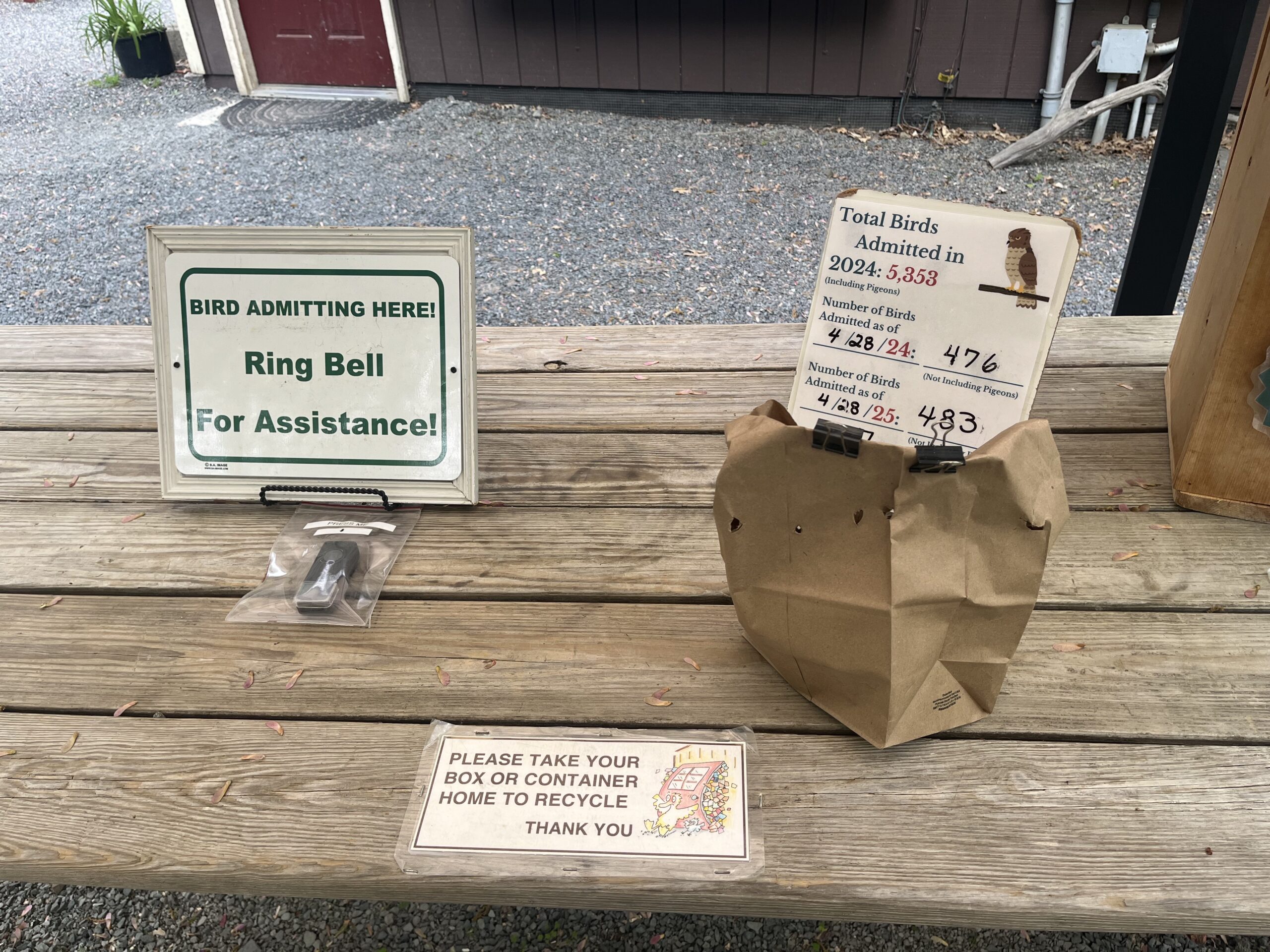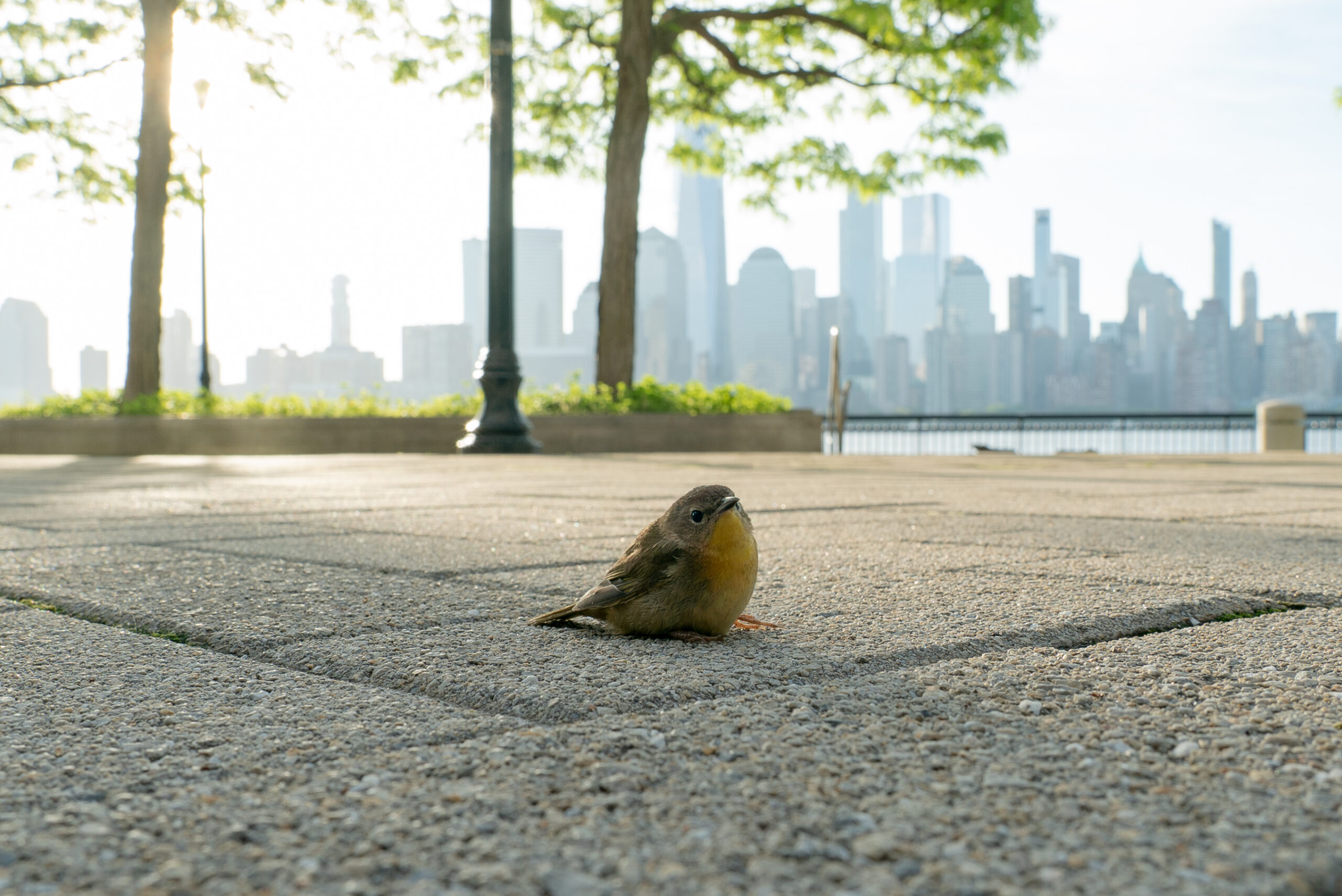
Advocates estimate that around 1 billion birds are killed every year in the US due to window strike. (Photo courtesy ofJersey City Birds and Jersey City Feminist Bird Club)
Alex Connell is a 2025 CivicStory Ecology-Civics reporting fellow and writes for TAPInto Hoboken.
This story was produced in collaboration with CivicStory as part of the NJ Ecology-Civics Reporting Project.
JERSEY CITY, NJ – Over a billion birds die each year in the United States from colliding with windows, quite often during migration periods, and we need to do more to help them fly safely, says Lorraine Freeney, founder of Jersey City Birds (JCB) and Harri Bailey, co-founder of Jersey City Feminist Bird Club (JCFBC).
Founded in 2020, as an outlet for bird lovers to de-stress at the onset of the pandemic, Freeney says that JCB’s aim has always been to promote awareness, appreciation, and protection of wild birds and their habitat and to educate the community about the importance of birds to the ecosystem.
Now, Freeney and Bailey hope that their most recent collaborative project, ‘For the Birds’ will further their mission and encourage legislation surrounding building regulations to protect birds from colliding with windows.
Jersey City sits along the Atlantic Flyway, a major migration route for birds in North and South America, spanning from the Arctic tundra to the Caribbean. It follows the eastern coast of North America, from Greenland to South America, which leaves so many birds vulnerable to collisions locally.
“No one suspects New Jersey is the wildlife hotspot it is. Jersey City is an excellent place to start birding…we have a huge variety of habitats on our doorstep – from coastal plains to swamps, the pine barrens, forested uplands, saltmarsh, open ocean, ex-landfills, impoundment ponds,” Bailey noted.
“We’re close with Jersey City Birds and got to talking about what we could do together to address the dead birds we saw in the mornings,” Bailey told TAPinto Jersey City.
Their idea was to conduct a two-week survey, using volunteers from JCB and JCFBC and beyond to monitor two “well-known” collision spots, one by the waterfront and another in downtown Journal Square, to identify which buildings would benefit the most from their proposed deterrents.
The deterrents include window films, decals and turning out unnecessary lights, Freeney says.
Birds are unable to recognize glass as a solid “so they will try to fly through it, especially when they see a reflection of a habitat,” Freeney explains.
Freeney also adds that it’s not just towns or cities in the path of migratory birds that are facing challenges, it’s anywhere where there are birds and buildings, which includes houses.
“Collisions tend to happen within the first 5 or 6 stories of a building. It’s not actually high up, it’s typically when they’re taking off again after a period of rest,” she says.
The project has a number of objectives, Freeney and Bailey say.
One of which is to see Jersey City adopt building codes that use design standards that reduce collisions and “bird-friendly construction materials,” Freeney says.
Bird-friendly glass, which is designed to reduce bird strikes, features etched patterns on the surface of the glass, making it visible to birds.
For pre-existing buildings, the project is aiming to encourage window films or decals to be implemented.
“They’re readily available, and they have been proven to help,” Freeney says.
Another objective of the project is to implement ‘Lights Out Legislation’. This refers to policies that encourage or mandate the turning off of non-essential outdoor lighting at night, particularly during bird migration periods.
This legislation aims to protect migratory birds, who can become disoriented and vulnerable to collisions with buildings when navigating using the night sky.
Freeney and Bailey are hoping that people will also implement these deterrents off their own accord.
Bailey says that their mission is not anti-development or anti-high-density housing, but rather supports safe flight for birds.
“The point is that if you’re going to be building within the path of millions of birds who have been taking this route for hundreds of thousands of years, way before we were here, we need to be making concessions for them,” she says.
Bailey said that one of the challenges for herself and the volunteers during the project was waking up at 5 a.m., but that it was necessary to see the scale of the issue.
She explained that most birds fly through the nighttime hours and if they do collide with a window, a fox or raccoon may get to them before the volunteers do, or they may be swept up by cleaners.
One of the volunteers, Rachel Emmet, told TAPinto Jersey City that she had always hoped to see a Yellow-Billed Cuckoo, whose numbers are in steep decline out in the wild.
“I’ve never been lucky enough to see one in the wild. So having the collision monitoring team find one just 3 days in, dead and smashed into the towers at Journal Square, a neighborhood I consider my home, breaks my heart. Seeing its broken body filled me with a lot of sadness and anger,” Emmet said.
“I hate that my beloved city is not a safe passage, or a roost, but the gravesite of a bird who’s come from so far away and I would be delighted to see alive,” Emmet lamented.
Another volunteer, Kim Correro, said that she was not prepared to find a dead bird within five minutes of starting her first shift.
“Although the organizers prepared us well, I was still almost in shock to find a dead bird nestled in the greenery of a planter in Journal Square within the first five minutes of my very first shift. It’s hard to grasp—because it doesn’t have to be this way. I hope this project raises awareness and encourages more people to turn off their lights at night and learn how they can help keep our migrating birds safe.”
Freeney says that while not all the birds they find are dead, few of the injured ones survive.
“It can be so heartbreaking to have one die in your care or in your hand, which sometimes happens,” she says.

(Photo courtesy of Jersey City Birds and Jersey City Feminist Bird Club)
The injured birds they found over the course of the survey were transported to The Wild Bird Fund in New York or The Raptor Trust in New Jersey.
Freeney says that their project’s aims are not radical or particularly new.
“In places like New York, they are already incorporating bird safety into their design standards through Local Law 15.”
Local Law 15, also known as the “Bird-Friendly Materials Bill” is a New York City law that mandates the use of bird-friendly materials in new buildings and major retrofits
“Many other cities too, from Seattle to Newark, have taken steps to become more bird-friendly, and it’s time for Jersey City to join them. Unlike many problems, the issue of bird collisions has proven solutions. We just have to be willing to put those solutions into place,” Freeney stated.
‘For the Birds’ will be recruiting volunteers again during fall migration.
Contact jerseycitybirds@gmail.com to learn more.
This story was produced in collaboration with CivicStory as part of the NJ Ecology-Civics Reporting Project.
Co-published with TAPinto Jersey City.

Alex Connell is a 2025 CivicStory Ecology-Civics reporting fellow and writes for TAPInto Hoboken.
